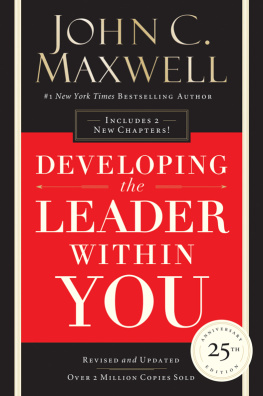D EVELOPING
the L EADERS
A ROUND Y OU
D EVELOPING
the L EADERS
A ROUND Y OU

J OHN C. M AXWELL

Copyright 1995 by INJOY, Inc.
All rights reserved. Written permission must be secured from the publisher to use or reproduce any part of this book, except for brief quotations in critical reviews or articles.
Published in Nashville, Tennessee, by Thomas Nelson, Inc.
Nelson Business books may be purchased in bulk for educational, business, fundraising, or sales promotional use. For information, please email SpecialMarkets@ThomasNelson.com.
Library of Congress Cataloging-in-Publication Data
Maxwell, John C., 1947
Developing the leaders around you / John C. Maxwell
p. cm.
Includes bibliographical references.
ISBN 0-7852-6198-2 (IE)
ISBN 10: 0-7852-6150-8 (HC)
ISBN 13: 978-07852-6150-6
ISBN 0-7852-8111-8 (TP)
1. Leadership. I. Title.
HD57.7.M39423 1995
658.4092dc20 94-42608
CIP
Printed in the United States of America
06 07 08 09 10 QW 11 10 9 8 7 6
This book is dedicated to the men who have developed me:
To Larry Maxwell,
my brother, who encouraged in me the desire
to grow mentally;
To Glenn Leatherwood,
my junior high Sunday school teacher,
who inspired me to have a heart for God;
To my high school basketball coach,
Don Neff, who instilled in me the desire to win;
To Elmer Towns, pastor and friend,
who strengthened my desire to reach my potential;
And above all, to my father, Melvin Maxwell,
my lifelong mentor. I am a leader today because of the time
you spent developing me.

CONTENTS

THE LEADERS KEY QUESTION:
AM I RAISING UP
POTENTIAL LEADERS?
O ne night, after working quite late, I grabbed a copy of SportsIllustrated, hoping its pages would lull me to sleep. It had the opposite effect. On the back cover was an advertisement that caught my eye and got my emotional juices flowing. It featured a picture of John Wooden, the coach who led the UCLA Bruins for many years. The caption beneath his picture read, The guy who puts the ball through the hoop has ten hands.
John Wooden was a great basketball coach. Called the Wizard of Westwood, he brought ten national basketball championships to UCLA in a span of twelve years. Two back-to-back championships are almost unheard of in the world of competitive sports, but he led the Bruins to seven titles in a row. It took a consistent level of superior play, good coaching, and hard practice. But the key to the Bruinss success was Coach Woodens unyielding dedication to his concept of teamwork.
He knew that if you oversee people and you wish to develop leaders, you are responsible to: (1) appreciate them for who they are; (2) believe that they will do their very best; (3) praise their accomplishments; and (4) accept your personal responsibility to them as their leader.
Coach Bear Bryant expressed this same sentiment when he said:
Im just a plowhand from Arkansas, but I have learned how to hold a team togetherhow to lift some men up, how to calm others down, until finally theyve got one heartbeat together as a team. Theres always just three things I say: If anything goes bad, I did it. If anything goes semi-good, then we did it. If anything goes real good, they did it. Thats all it takes to get people to win.
Bear Bryant won people and games. Until a few years ago, he held the title of the winningest coach in the history of college football with 323 victories.
Great leadersthe truly successful ones who are in the top 1 percentall have one thing in common. They know that acquiring and keeping good people is a leaders most important task. An organization cannot increase its productivitybut people can! The asset that truly appreciates within any organization is people. Systems become dated. Buildings deteriorate. Machinery wears. But people can grow, develop, and become more effective if they have a leader who understands their potential value.
The bottom lineand the essential message of this bookis that you cant do it alone. If you really want to be a successful leader, you must develop other leaders around you. You must establish a team. You must find a way to get your vision seen, implemented, and contributed to by others. The leader sees the big picture, but he needs other leaders to help make his mental picture a reality.
Acquiring and
keeping good people
is a leaders most
important task.
Most leaders have followers around them. They believe the key to leadership is gaining more followers. Few leaders surround themselves with other leaders, but the ones who do bring great value to their organizations. And not only is their burden lightened, but their vision is also carried on and enlarged.
WHY LEADERS NEED TO REPRODUCE LEADERS
The key to surrounding yourself with other leaders is to find the best people you can, then develop them into the best leaders they can be. Great leaders produce other leaders. Let me tell you why:
T HOSE C LOSEST TO THE L EADER W ILL D ETERMINE THE S UCCESS LEVEL OF T HAT L EADER
The greatest leadership principle that I have learned in more than thirty years of leadership is that those closest to the leader will determine the success level of that leader. A negative reading of this statement is also true: Those closest to the leader will determine the level of failure for that leader. In other words, the people close to me make me or break me. The determination of a positive or negative outcome in my leadership depends upon my ability as a leader to develop those closest to me. It also depends upon my ability to recognize the value that others bring to my organization. My goal is not to draw a following that results in a crowd. My goal is to develop leaders who become a movement.
Stop for a moment and think of the five or six people closest to you in your organization. Are you developing them? Do you have a game plan for them? Are they growing? Have they been able to lift your load?
Within my organizations leadership development is continually emphasized. In their first training session, I give new leaders this principle: As a potential leader you are either an asset or a liability tothe organization. I illustrate this truth by saying, When theres a problem, a fire in the organization, you as a leader are often the first to arrive at the scene. You have in your hands two buckets. One contains water and the other contains gasoline. The spark before you will either become a greater problem because you pour the gasoline on it, or it will be extinguished because you use the bucket of water.
Every person within your organization also carries two buckets. The question a leader needs to ask is, Am I training them to use the gasoline or the water?
A N O RGANIZATIONS G ROWTH P OTENTIAL I S D IRECTLY R ELATED T O ITS P ERSONNEL POTENTIAL
When conducting leadership conferences, I often make the statement, Grow a leadergrow the organization. A company cannot grow without until its leaders grow within.
Next page
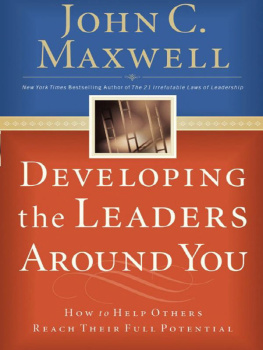
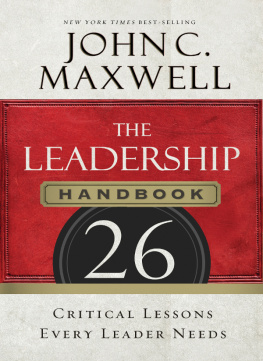
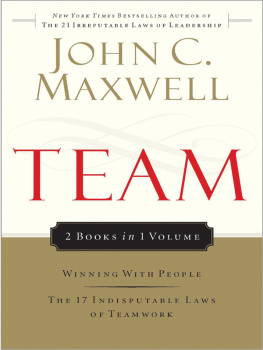
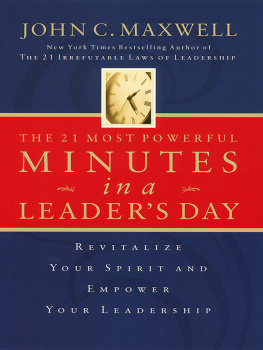
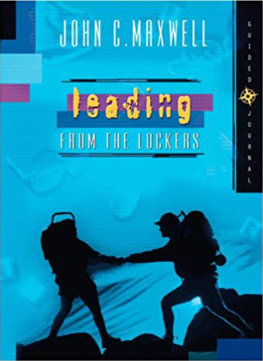


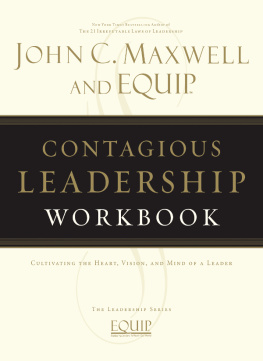
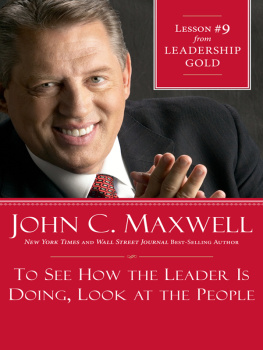
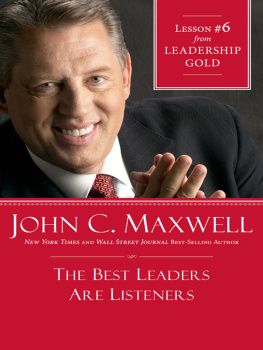

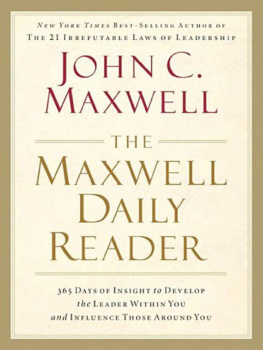
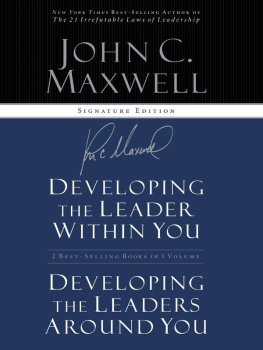
![Maxwell - The 360 [-degree] leader: developing your influence from anywhere in the organization](/uploads/posts/book/218782/thumbs/maxwell-the-360-degree-leader-developing-your.jpg)

